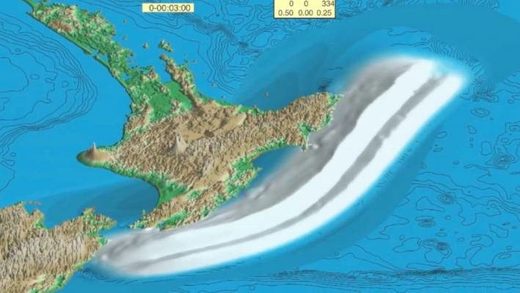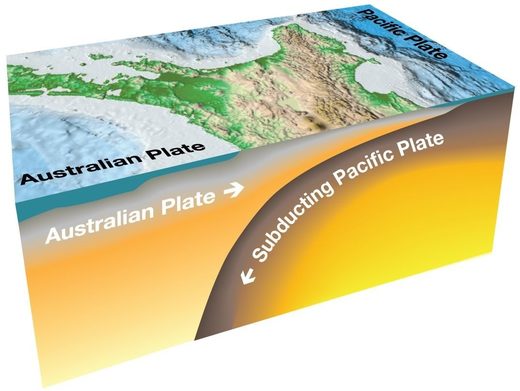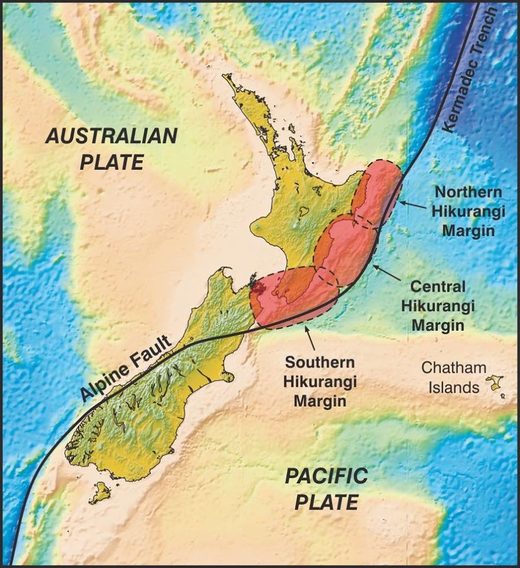
As we are constantly being reminded here in NZ, it’s a matter of “when” not “If”. I’ve lived through enough seismic upheaval already, but worse could be coming, especially for North Islanders. And there’s always the possibility that the HAARPsters will ensure things happen according their agenda.
Forewarned is fore-armed. Martin
Georgia Forrester
Stuff
Thu, 10 Jan 2019 17:11 UTC

© INGOMAR200
An earthquake from the Hikurangi subduction zone could devastate the east coast of NZ with a tsunami. This graphic illustrating a projected tsunami. The Hikurangi Project is a multinational science investigation of the subduction zone beneath New Zealand’s North Island. Specially designed pressure sensors are in place to detect uplift or subsidence of the sea floor.
It’s not a matter of if the Hikurangi subduction zone will go, it’s when – and that’s what Kiwi scientists are preparing for.
Scientists are developing an emergency response plan to prepare for the rupture of New Zealand’s largest fault.
Using a credible magnitude 8.9 earthquake and tsunami scenario, five Civil Defence Emergency Management (CDEM) groups from across the North Island are working together on the plan.
Natasha Goldring, who is leading the project, said a response plan was vital in making sure people were ready and resilient for a future earthquake and tsunami event.
“The scenario we are using to support the development of this response plan is a very realistic example of what we could face in our lifetime, or that of our children and grandchildren.”
Although the project is being driven by Civil Defence groups, people still needed to make sure they understand the risks they face and take the necessary steps to prepare themselves, Goldring said.
“Communities are at the centre of all response planning, and we want this project to be a collaborative effort. We are all responsible for ourselves and our families – we are all part of Civil Defence in New Zealand.”
The project’s launch is in response to research over the past few years which suggests the likelihood of a rupture may be higher than initially understood.
GNS scientist, Dr Laura Wallace, said this came down to a combination of factors; including new insights from the Kaikōura earthquakes, evidence of pressure building on the fault, and geological evidence of prehistoric earthquakes on the subduction zone.

Hikurangi subduction zone near New Zealand
“A subduction zone is where one tectonic plate subducts (dives) underneath another – the boundary between these two plates forms a large fault.
“This one in particular runs offshore from the east of Gisborne down to the top of the South Island and poses a significant earthquake and tsunami risk to the entire east coast of New Zealand.”
Subduction zone faults had been responsible for most of the world’s deadliest earthquakes and tsunamis to date, with Japan 2011 being the most recent example, she said.
“We know the Hikurangi subduction zone can produce large earthquakes and tsunamis, and these events have happened in the past.

© GEONET
The Hikurangi subduction zone off New Zealand’s east coast, and its margins.
“While we’re carrying out more research to build a clearer picture of the hazard posed by the Hikurangi fault, we know a rupture at some point in the future is certain.”
For information on how to prepare for an earthquake or tsunami, visit www.happens.nz.







